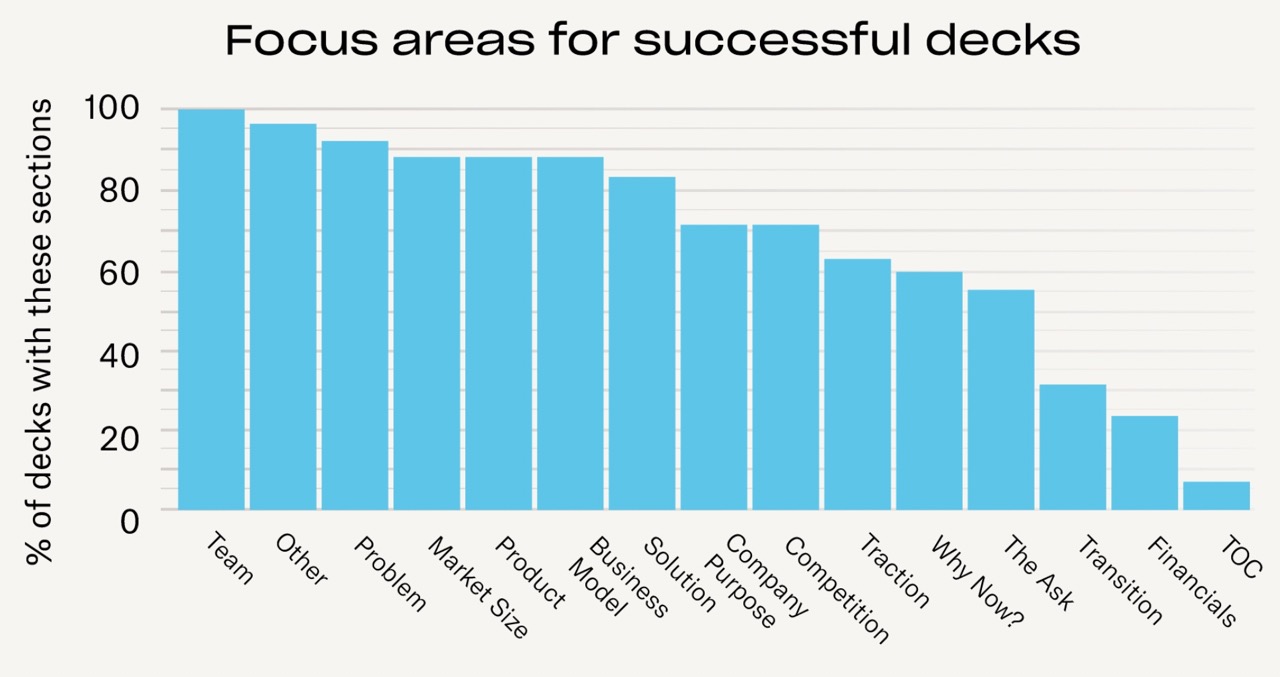Investors are spending 24% less time looking at pitch decks in 2022, compared to 2021. On average, you have just under three minutes to convince them to take a meeting with you. In fact, for decks that fail to raise funding, investors give up in just 2 minutes and 13 seconds. That’s not a lot of time to make a first impression, so you’ve got to make it count.
It’s pretty rare that I get to talk to someone who is as big of a pitch deck nerd as I am, but when I was finally able to nerd out with the research lead at DocSend, how could I not? We go deep into what the data tells us about what makes a pitch deck successful, and indicators for what works less well.
The biggest trend change in how investors are looking at pitch decks is that investors are spending a lot less time on slides overall, but where that time is spent is shifting.
“This year, we know that investors are spending less and less time on pitch decks. That’s not necessarily surprising: The number of links to pitch decks sent out has gone up, and the time spent on decks is staying very low,” explains Justin Izzo, research lead for DocSend. “What’s surprising to me is that we know that the product and business model sections of decks are really where investors liked to lean in, especially for companies at the early stages. But investors have almost halved their time spent on these sections at the pre-seed level. Investors are still giving scrutiny to these sections, but they’re doing it so much more quickly than ever before. So founders have to really think deeply about their business, but communicate briefly.”
One of the biggest shifts is that investors spend a lot more time on what DocSend describes as the purpose of a startup slide — the “why are you doing this” part of the story.
“Founders have to really think deeply about their business, but communicate briefly,” laughs Izzo, “I like to call it ‘compelling brevity.’ It isn’t easy to do, mind you, but it is what founders should be striving for.”
The timeline to fundraising varies. This year, 25% of startups raised in less than six weeks; 58% raised in less than 12 weeks; 70% raised in less than 18 weeks; 90% raised in less than 24 weeks. Last year, the pace was a little bit slower. Graph Credit: DocSend.
The third-longest-viewed section is the Company Purpose section (after the product and business model sections), but Izzo points out that this section is usually only a very small part of the slide deck, often just a line or two of text on slides one or two of the deck.
“Usually it’s one sentence, a pointed and well-balanced statement of what the company is. We usually see that at the very front of the deck, often on the intro slide. What was shocking to me when I …read more
